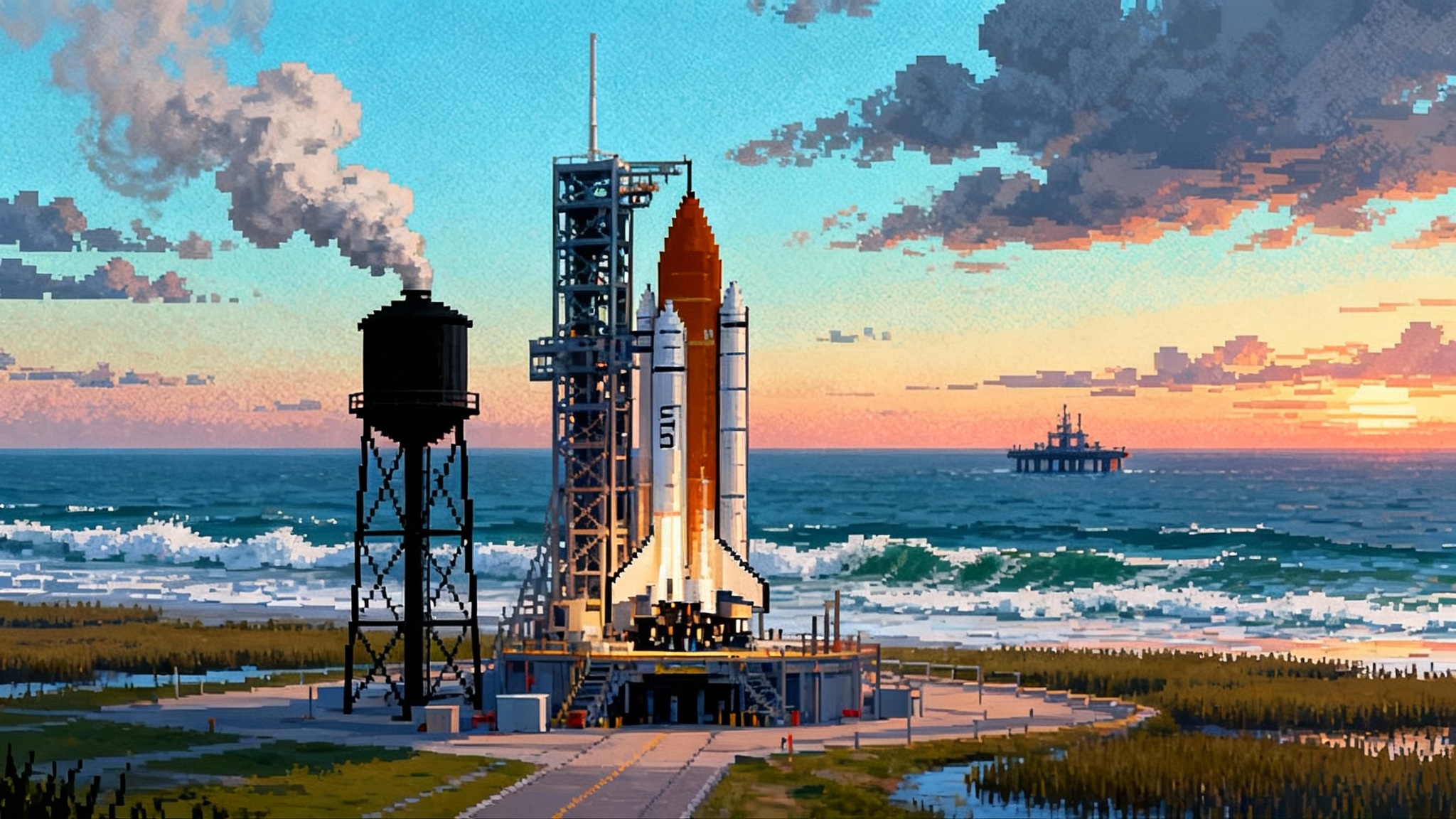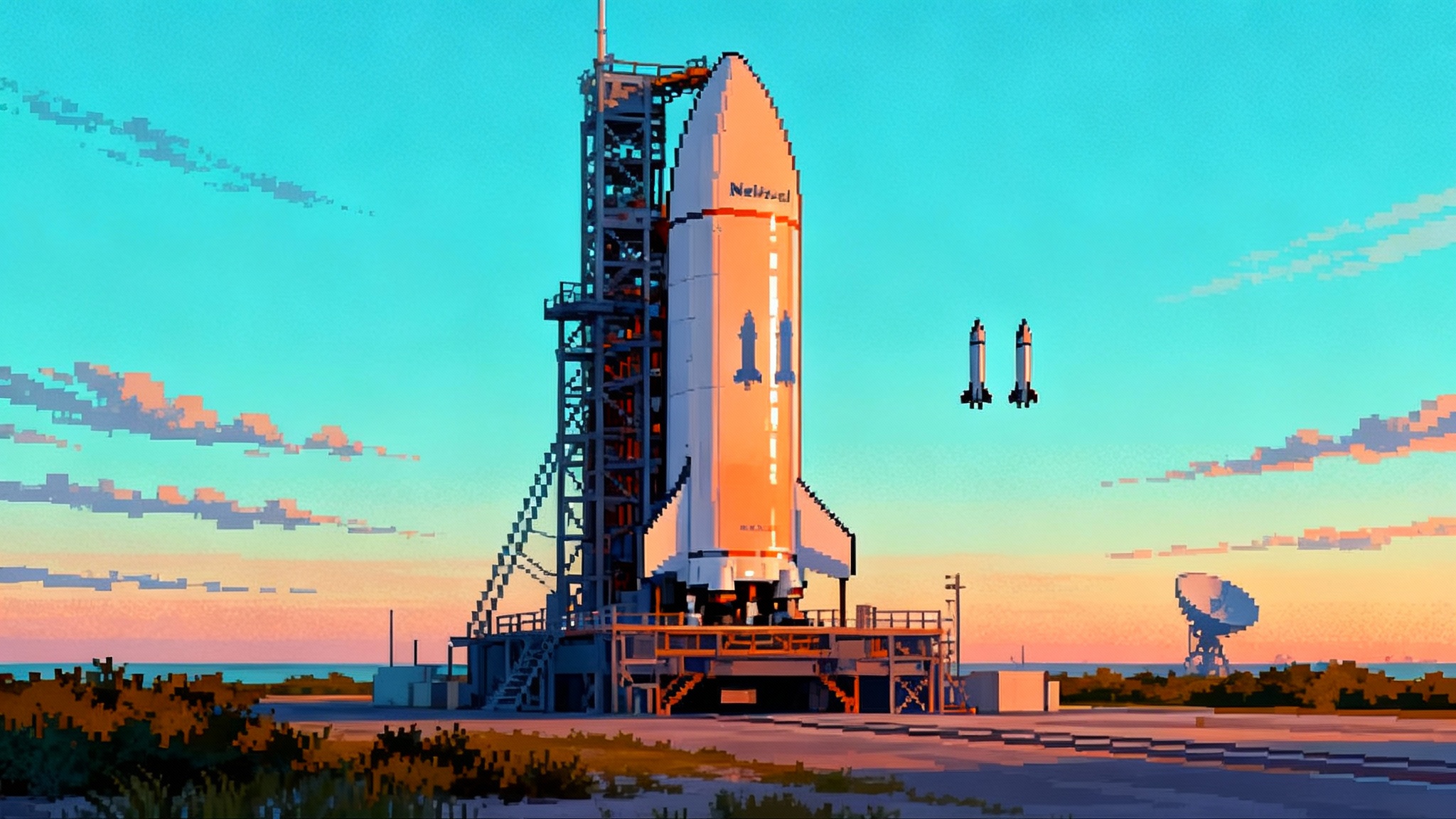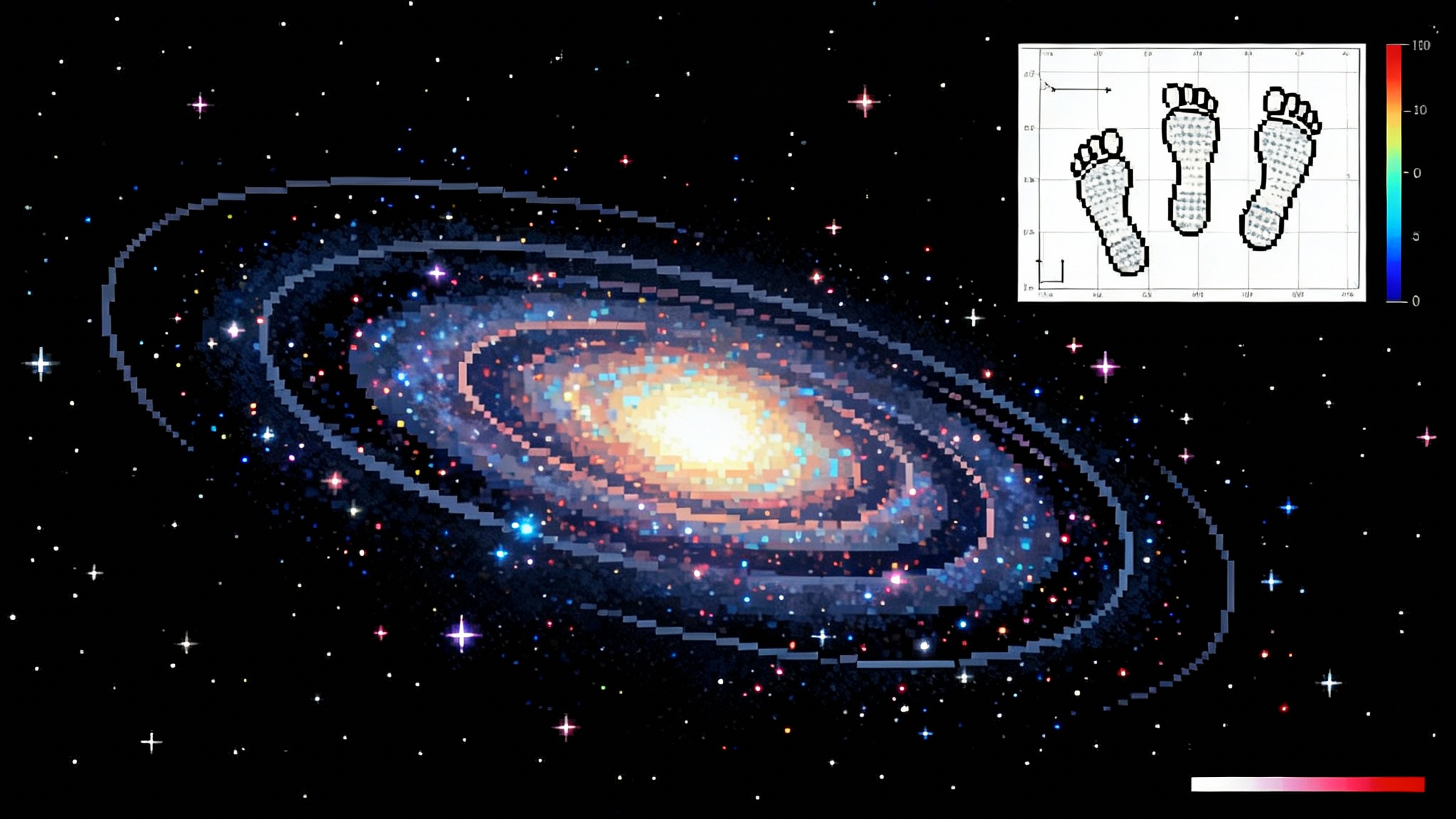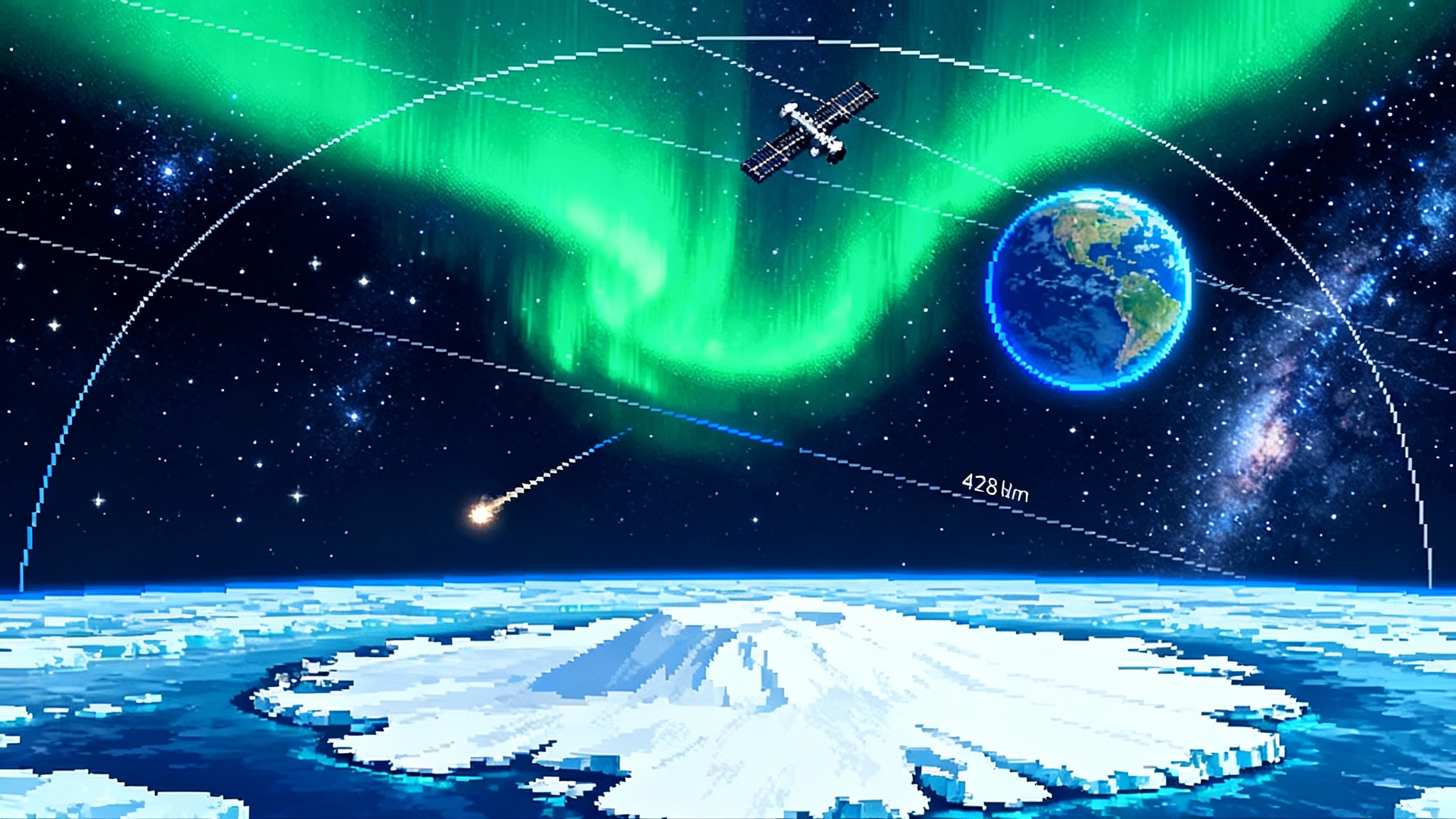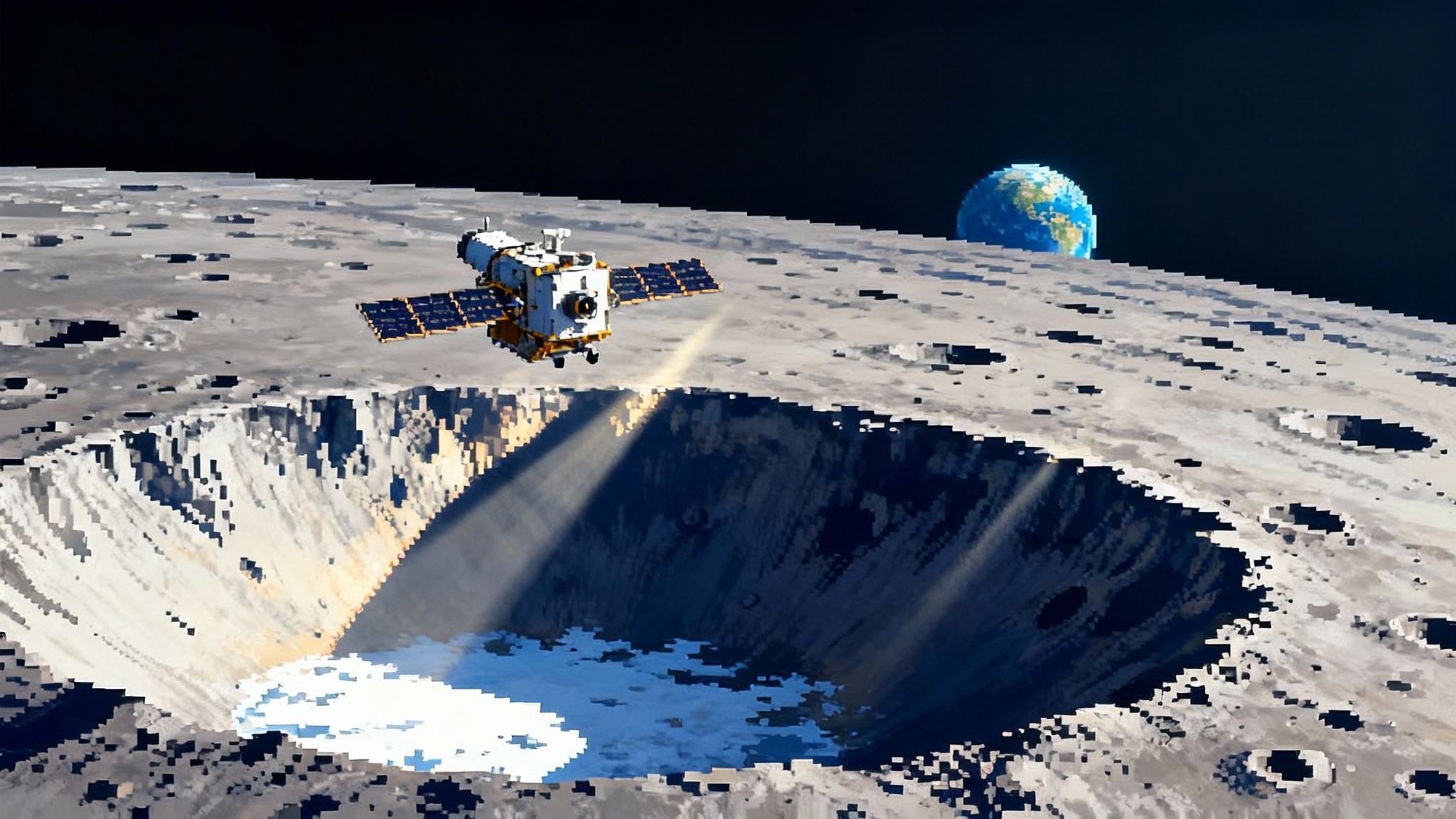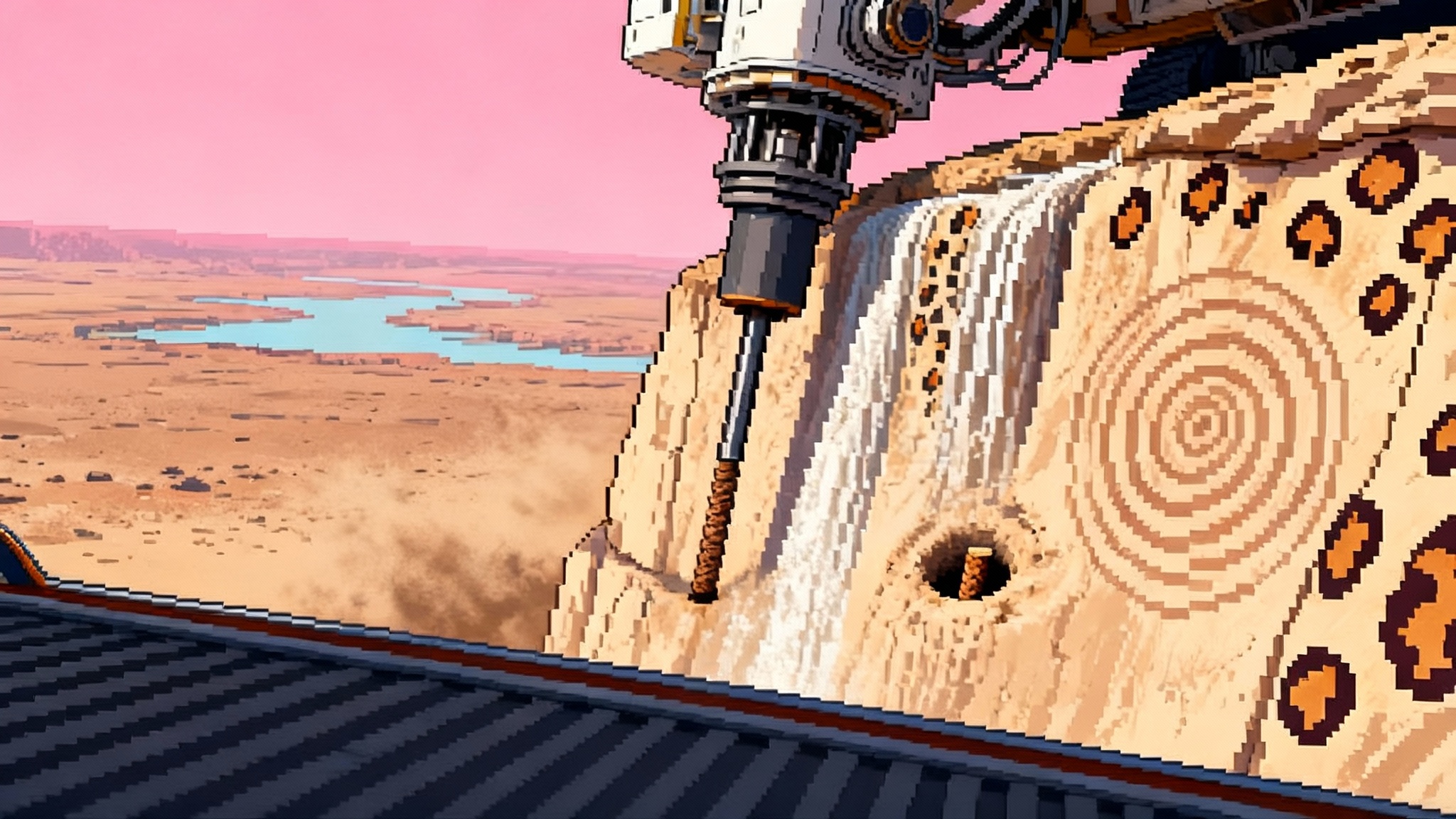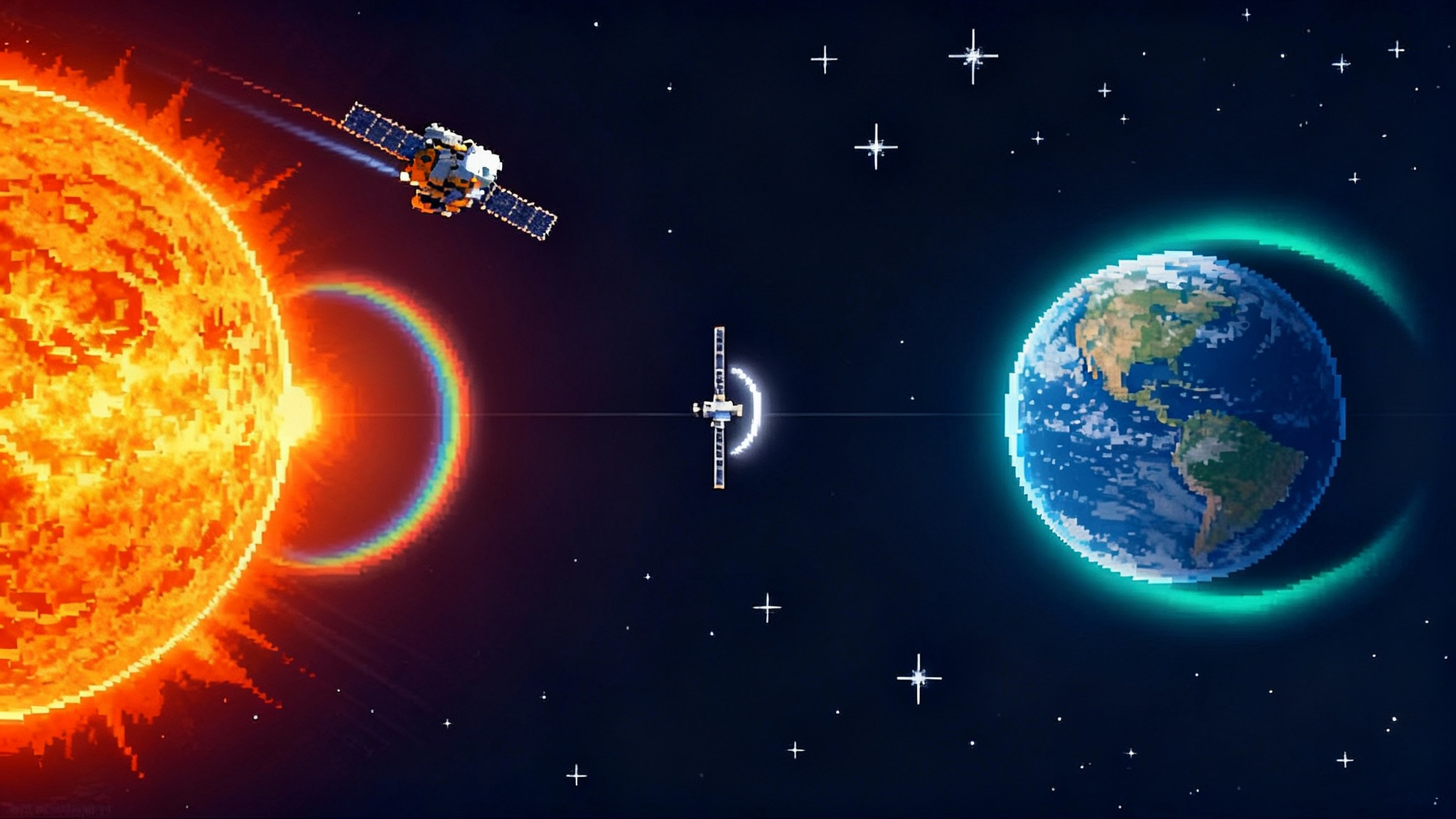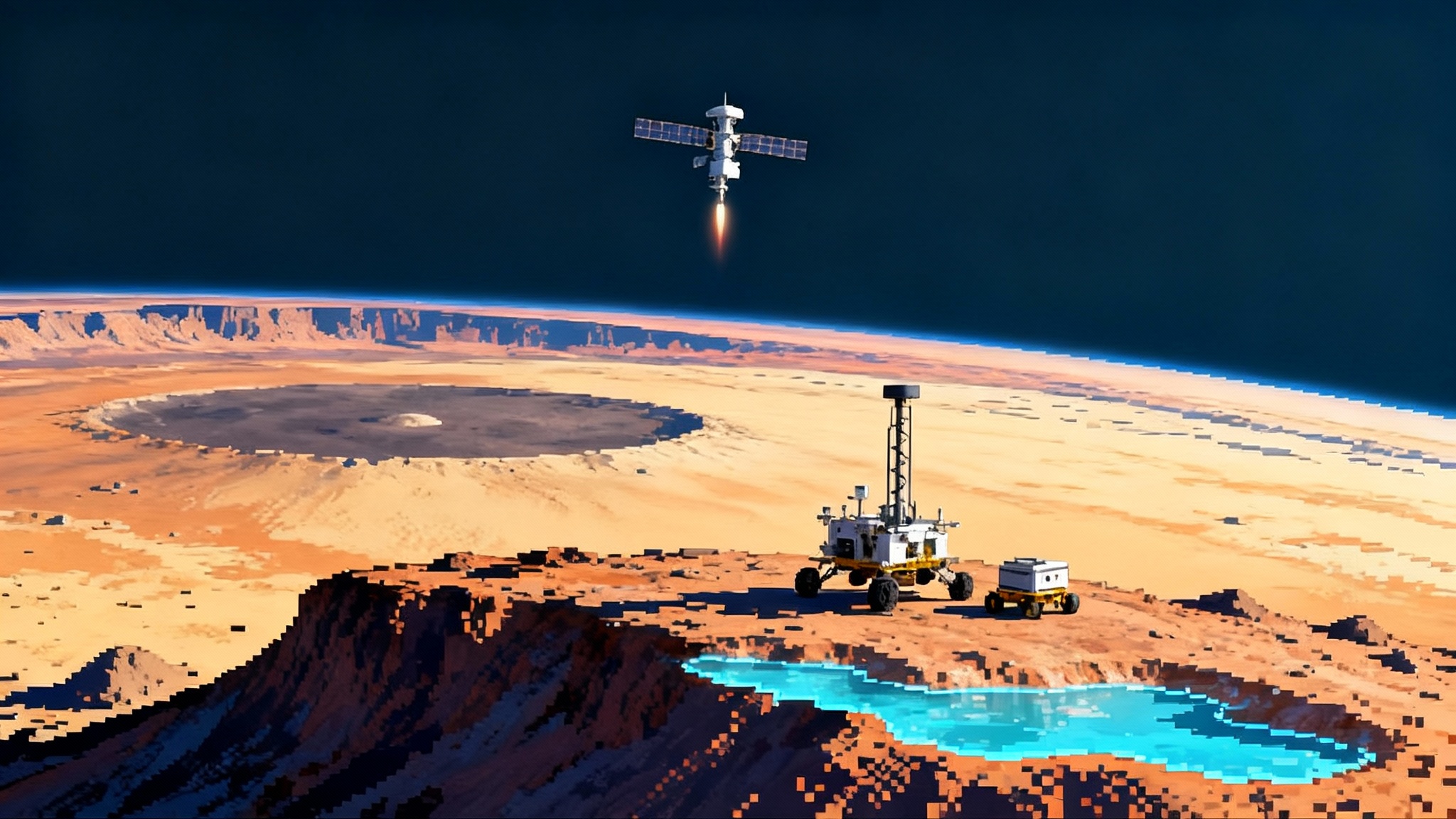A Rogue Planet’s Record Feast: Cha 1107‑7626 in Real Time
Astronomers watched rogue planet Cha 1107-7626 brighten through summer 2025 as torrents of gas rained down, a record accretion burst on a planetary-mass world. The flare reveals star-like magnetospheric funnels and sets up a roadmap for Roman, the ELT, and ALMA to turn orphan planets from hints into a census.

Breaking: a planet caught eating like a star
Most planets spend their lives in the gravitational embrace of a parent star. Cha 1107-7626 is not most planets. In late spring through August 2025, astronomers watched this free-floating world brighten and flare as torrents of hydrogen and dust cascaded onto it. The accretion rate soared to roughly six billion tons per second, several times higher than only a few months earlier, making it the strongest accretion episode ever measured for a planetary-mass object. The team’s technical analysis, posted as an accretion burst discovery paper, shows line profiles and continuum changes that match the playbook usually reserved for young stars.
Cha 1107-7626 sits about 620 light-years away in the Chamaeleon star-forming complex. It is young, about one to two million years old. It is hefty for a planet, somewhere between five and ten times the mass of Jupiter, yet still far below the threshold to ignite hydrogen fusion, which takes tens of Jupiter masses. Crucially, it drifts alone. There is no central star to set the rules of its orbit, no stellar day to define its calendar. And yet it is growing through a mechanism that looks star-like.
What “star-like” accretion really means
If you have seen videos of water spiraling into a bathtub drain, you know the general idea. In young stars, magnetic fields guide inflowing gas along invisible rails that slam into the stellar surface near the magnetic poles. The impact creates hot spots that pulse and flare. Spectral fingerprints, especially the hydrogen alpha line in the red part of the spectrum, grow broader, split, and sometimes show red-shifted absorption that flags gas plunging inward.
That same pattern showed up in Cha 1107-7626. The hydrogen alpha line developed a double peak with red-shifted absorption. The optical glow climbed by roughly one and a half to two magnitudes. Even the mid-infrared light from the surrounding material budged upward, and new water vapor features appeared. These are the calling cards of magnetospheric accretion, the same physics that feeds infant stars and brown dwarfs. Seeing them in a lone planet says two things at once. First, a planetary mass can host powerful magnetic funnels. Second, the boundary between small stars, brown dwarfs, and giant planets is a gradient, not a wall.
The raw numbers can be deceiving. Six billion tons per second sounds like a firehose, and it is. But do the math and the planet gains only a sliver of mass during a short burst. A rate of about six trillion kilograms per second maintained for two months adds up to roughly 3 × 10^19 kilograms. Jupiter weighs about 2 × 10^27 kilograms, so one such burst adds only a few parts in one hundred million of a Jupiter. Short spikes reshape the atmosphere, the magnetic environment, and the disk, but they scarcely budge the planet’s overall mass. The drama is in the energy and chemistry, not the scale reading.
How a planet becomes an orphan
Rogue planets, also called free-floating planets, get that way through two broad paths:
- Birth without a star. A clump in a cold molecular cloud collapses under its own gravity, never amassing enough mass to light fusion. The result is a star-like formation process that stops at planetary mass. Cha 1107-7626’s star-like accretion signatures point strongly in this direction.
- Ejection from a home system. Planetary systems are crowded construction sites. Growing worlds scatter one another as they migrate through disks. A close gravitational encounter can sling a planet out entirely. The Milky Way’s deep gravity holds the castaway, but no star does.
We should expect both routes to operate. The first path blurs the vocabulary we use. If a star fragment stalls at ten Jupiter masses, is it a failed star, a brown dwarf, or a planet? The second path changes the economics of planetary systems. Ejection is not wasteful. It is how some systems reach long-term stability. Like a crowded train that must offload a few passengers to close the doors, a young system can become stable by sacrificing a member to interstellar space.
Why the galaxy may be full of them
Microlensing surveys and infrared sky maps have been hinting for years that orphan worlds are common. A microlensing event is like a cosmic peekaboo. When a compact object drifts in front of a distant star, its gravity bends and magnifies the starlight for a few hours or days. You never see the dark object directly. You read its mass from the light curve it imprints. Short events can signal free-floating planets. Those surveys are statistical by nature, but together they suggest that the Milky Way has a vast population of worlds that are either unbound or on orbits so wide that their stars barely affect them. As with our coverage of Euclid deep fields live map, sky-spanning data turns hints into population statistics.
Cha 1107-7626 turns that statistical hunch into a personality. It is a specific, named world that behaves like a baby star and a planet at the same time. It proves that star-like accretion can sculpt objects that stop well below the fusion line. If that can happen once, it can happen often. Regions like Chamaeleon, Taurus, and Ophiuchus have the raw ingredients and the turbulent flows needed to assemble low-mass fragments. Multiply that across the galaxy’s thousands of star-forming nurseries and you get a plausible factory for cosmic castaways.
Rethinking planet formation and migration
The standard picture has planets assembling in disks around stars, gently accreting pebbles and gas. That picture is right, but it is incomplete. Cha 1107-7626 shows that a planet-mass object can also grow by gulping gas from a personal disk, no parent star required. That changes how we think about migration too. If some giant planets pre-date stars in their vicinity, or grow independently in the interstellar medium, then not every hot Jupiter or distant super-Jupiter must have migrated solely through a stellar disk. Some may have wandered in, been captured, or perturbed into wide orbits that mimic ejection but end in a loose association with nearby stars.
There is also a mechanism lesson hiding in the line shapes. Magnetospheric accretion funnels gas along field lines. To run that machine you need a strong field and a compact object that spins. That tells us that the dynamos in young planetary-mass bodies can be intense. Models that explain auroras and radio bursts from brown dwarfs likely apply to hefty rogue planets as well. That is testable with radio arrays and time-domain spectroscopy.
The near-term tools that will turn hints into a census
Three facilities now on the runway can turn rogue planets from curiosities into a mapped population.
-
Roman’s microlensing survey. NASA’s Nancy Grace Roman Space Telescope is expected to begin operations in the second half of this decade. Its Galactic Bulge Time Domain Survey will monitor a sea of stars every few minutes for more than a year of combined coverage. Microlensing is unusual because it weighs what it finds rather than relying on reflected or emitted light. That makes it sensitive to dark, cold, or unbound objects, including planets with the mass of Mars and even massive exomoons. Roman will not just find rogue worlds. It will measure their mass function, locate them in the Galaxy, and reveal how often they come in families. That will finally test whether orphans are mainly ejected or mainly born free.
-
The Extremely Large Telescope. ESO’s 39-meter ELT is now planned to reach telescope first light in March 2029, with scientific first light in 2030, according to the ELT first light schedule update. Why does this matter for rogue planets? Aperture is light-gathering power and resolving power. A meter of mirror doubles as a meter of leverage against faintness and crowding. The ELT’s first-generation spectrographs will split the light from planetary-mass objects in nearby star-forming regions and young associations. That lets astronomers read magnetic fields, measure accretion through hydrogen lines, and track chemical changes in circumplanetary gas. With adaptive optics, the ELT can pick out faint companions or mini-disks that today blur into the background.
-
ALMA’s wideband sensitivity upgrade. The Atacama Large Millimeter/submillimeter Array is in the midst of a multi-year program to widen its instantaneous bandwidth and sharpen its spectral reach. New Band 2 receivers and a next-generation correlator are designed to speed spectral scans by factors of tens and to boost continuum sensitivity by factors of a few. In practical terms, ALMA will map cold gas and dust around planetary-mass objects much faster and to lower surface densities than before. For a target like Cha 1107-7626, that means measuring how much gas is really in the mini-disk and watching how it drains during and after bursts.
These three efforts are complementary. Roman will find the population and weigh it in bulk. The ELT will dissect individual cases with optical and infrared spectroscopy. ALMA will trace the cold fuel and the chemistry, including molecules like carbon monoxide and water vapor that respond quickly to heat injected by accretion.
From curiosities to probe targets
Today, rogue planets are mostly faint points and fleeting lensing signatures. In a decade, some will be physical laboratories. Here is a clear plan the community can act on:
-
Build a trigger system that treats planetary-mass accretion like supernovae. When a survey or a spectrograph flags a brightening or a broadened hydrogen line in a candidate substellar object, alerts should flow automatically to facilities that can pounce within hours. Put the Very Large Telescope, Keck, Gemini, and the Large Binocular Telescope on a standing time-domain program for substellar bursts. This leans on the rapid-response observing muscle we have highlighted in our asteroid close-pass rapid response.
-
Synchronize ALMA follow-ups with optical spectroscopy. The chemistry of a small disk changes on days to weeks when accretion surges. A queue that couples time-critical ALMA scans to live optical alerts can capture the rise and the cooling tail, which constrains the energy budget and the geometry of the inflow.
-
Prepare Roman’s microlensing alert stream for orphan hunting. Short events are the signature of low mass, possibly unbound objects. That means cadence and real-time modeling matter. Community pipelines should flag sub-day events, run mass and distance posteriors in minutes, and hand off best candidates to ground-based telescopes for parallax and finite-source effects. With that, Roman will deliver not just counts but distances and velocities.
-
Define a shortlist of nearby orphans for deep characterization. Use Gaia astrometry, infrared surveys, and wide-field spectrographs to build a catalog of the closest planetary-mass drifters. Those are the worlds we can study in exquisite detail with the ELT, the Giant Magellan Telescope, and the Thirty Meter Telescope.
And what about actual probes? Getting hardware to a target even ten light-years away is a century-class project with current propulsion. Still, mapping the neighborhood of orphan worlds has a practical payoff. If a rogue planet passes within a few light-years of the Sun in the coming centuries, a beamed-sail flyby becomes more realistic. The prerequisite is not a propulsion breakthrough. It is an accurate map of nearby free-floating objects and their trajectories. Roman and follow-on astrometric missions set that foundation, and efforts like the Tianwen-2 small-body campaign show how quickly small targets can become reachable once trajectories are nailed down.
The business of blurred lines
Companies and institutions are already positioning for this shift. The European Southern Observatory has invested in high-throughput, high-stability spectrographs that make hydrogen line monitoring routine. The National Radio Astronomy Observatory and its partners are building a new ALMA correlator and wider bandwidth receivers that turn multi-line chemistry into a single track observation. NASA’s Goddard Space Flight Center and the Space Telescope Science Institute are designing Roman’s microlensing survey to be not just a one-time census but a live stream of events the whole community can chase.
This is how blurred categories sharpen science. By treating a planet as if it were a star for the purposes of accretion physics, we learn that dynamo action, hot spots, and disk chemistry scale down in predictable ways. By treating a lensing blip as if it were a weigh scale, we learn that dark and isolated objects can be counted without relying on their own light.
What to watch next
- Does the burst in Cha 1107-7626 shut off abruptly or fade slowly, and does another one follow? Recurrent bursts would mark it as the first known planetary-mass analog of EXor outbursts known in young stars.
- How strong and structured is its magnetic field? Radio campaigns can pin that down and test whether the accretion funnels are steady or clumpy.
- How massive is its mini-disk? ALMA’s upgraded bandwidth and sensitivity will shorten the time needed to measure dust and gas mass by factors of a few, which will improve limits on how long the reservoir can power future bursts.
- Are there similar objects hiding in other nearby nurseries? A coordinated search of Chamaeleon, Lupus, and Taurus with time-domain spectroscopy could grow the sample from one to dozens.
The bottom line
On October timelines, Cha 1107-7626 is a headline. On cosmic timelines, it is a lesson plan. A free-floating world grew by gulping gas in a way that mimics a newborn star. The galaxy likely formed many such orphans. Within this decade and the next, Roman will count them, the ELT will read their spectra, and ALMA will map their fuel. When we eventually send hardware beyond the Sun’s influence in earnest, we will not be flying blind. We will have a map that includes the loneliest worlds of all, and a physics toolkit built on the night we watched a planet eat like a star.
